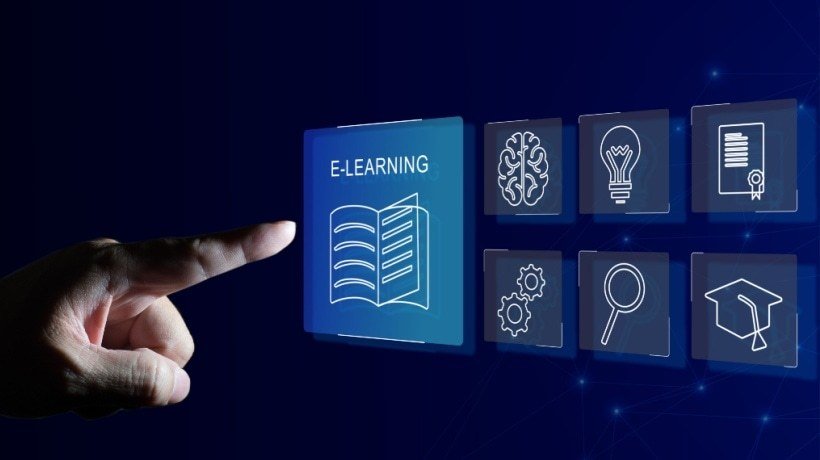Best Practices In Corporate Training
In the highly competitive business environment of today, companies are recognizing more and more the importance of investing in human resources. Amongst the most successful methods of doing this is to use strategic and well-planned corporate training programs. Not only do these improve employee performance, but they also help to increase retention rates. By embracing the best corporate training practices, companies can create an atmosphere of constant learning, minimize turnover, and improve general productivity.
Why Corporate Training Matters
Corporate training extends beyond compliance and onboarding. It has a direct impact on business results by filling skills gaps, increasing employees’ confidence, and linking individual objectives to organizational goals. More significantly, it demonstrates to employees that the organization is invested in their professional growth—an essential retention factor. Correctly executed training drives:
- Increased employee engagement.
- Improved job performance.
- Turnover reduction and reduced hiring expenses.
- More effective workplace culture.
- Future-proof teams
Yet, these outcomes are not guaranteed. They call for careful planning and application of the best practices in corporate training.
1. Conduct A Comprehensive Training Needs Assessment
Prior to designing any learning program, determine where your organization and employees are today. This means:
- Assessing current skills.
- Identifying skills gaps.
- Mapping training to business goals.
Resources such as skills matrices, surveys, interviews, and performance reviews can be used to customize content to certain positions and departments. This prevents training from being generic and, rather, makes it targeted, which makes it more effective.
2. Align Training Goals With Business Objectives
One of the best best practices in corporate training is making learning outcomes specific to measurable business objectives. For instance:
- Desire to lower customer turnover?
Educate customer service reps in empathy and communication. - Want to scale digital transformation?
Upskill employees in data literacy or automation tools.
Such alignment provides a transparent ROI on training initiatives and encourages workers by demonstrating to them how what they learn helps realize the grander vision.
3. Personalize The Learning Experience
Those days of standardized training are over. Today’s learners expect training to be both flexible and applicable. Use metrics to provide tailored learning routes based on:
- Role-specific needs.
- Learning style preferences (videos, modules, live classes)
- Career objectives.
Personalization not only increases participation but also speeds up learning results.
4. Blend Learning Methods For Maximum Impact
Blended learning—mixing instructor-led sessions with self-paced, online modules—is a staple of corporate training best practices. It enables employees to:
- Learn at their own pace.
- Revisit content as needed.
- Participate in live discussions.
In addition, including microlearning (brief, bite-sized information) aids in remembering knowledge, particularly for working professionals.
5. Use Real-World Scenarios And Simulations
Training must be hands-on, not lectures. Incorporate case studies, simulations, and role-playing to enable employees to put what they learn into practice in real life. For example:
- A sales course may feature mock pitches.
- A leadership course could employ conflict resolution situations.
Such techniques enhance the application of skills and job confidence.
6. Encourage Peer-To-Peer Learning
Building a learning community in your company is one of the greatest corporate training best practices that inspire engagement and teamwork. Consider:
- Setting up internal mentorship programs.
- Hosting knowledge-sharing sessions.
- Setting up digital discussion forums or Slack channels.
When staff learn from one another, it enforces a growth and belonging culture.
7. Invest In Manager Training
Managers are frequently the bridge between training activities and execution. Endow them with coaching and performance feedback skills to aid their teams in learning. Involving managers in employee development greatly increases motivation and responsibility.
8. Measure Training Effectiveness
To improve continuously on your programs, you must measure results. Some important metrics are:
- Pre- and post-training tests.
- Employee feedback surveys.
- Improvements in on-the-job performance.
- Retention rates.
Use data to iterate and improve your training plans. This data-driven strategy is at the heart of best practices in corporate training.
9. Provide Continuous Learning Opportunities
Corporate training does not have to stop after onboarding or yearly workshops. Instead, encourage a culture of lifetime learning by providing:
- Access to online learning platforms.
- Continuous certifications or badges.
- Learning time during working hours.
Ongoing learning opportunities aid in making the employees future-oriented and devoted to continuing with the firm.
10. Recognize And Reward Learning Progress
Recognition is a powerful motivator. Celebrate employees who complete training, achieve certifications, or apply new skills successfully. This can be done through:
- Internal newsletters.
- Certificates.
- Promotions or new responsibilities.
Acknowledging effort reinforces the value of learning and strengthens your retention strategy.
How Best Practices In Corporate Training Drive Retention
Retention is usually determined by the way employees feel valued and supported. By utilizing the best practices in corporate training, organizations:
- Boost job satisfaction by investing in employee development.
- Develop more robust career trajectories within the company.
- Build a sense of community and shared purpose.
As per LinkedIn’s Workforce Learning Report, 94% of the employees indicate that they would remain longer at an organization that made investments in their professional Learning and Development.
Conclusion
Implementing the best practices in corporate training is not about checking a box; it’s an investment in your people and the future of your business. Done effectively, corporate training enhances individual performance as well as overall retention. From personalization and blended learning to peer-to-peer engagement and continuous development, these practices build an agile, loyal, and high-performing workforce.
Begin by linking training to your business objectives, emphasize learner experience, and don’t overlook measuring success. With these best practices, your corporate training strategy can be an effective performance and employee satisfaction driver.
Skills Caravan
Skills Caravan multi-product Learning Experience Platform, Content Library, Engagement platform, Credentialing and Impact reporting we automate and integrate the Learning and Development process.




